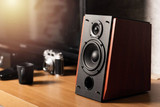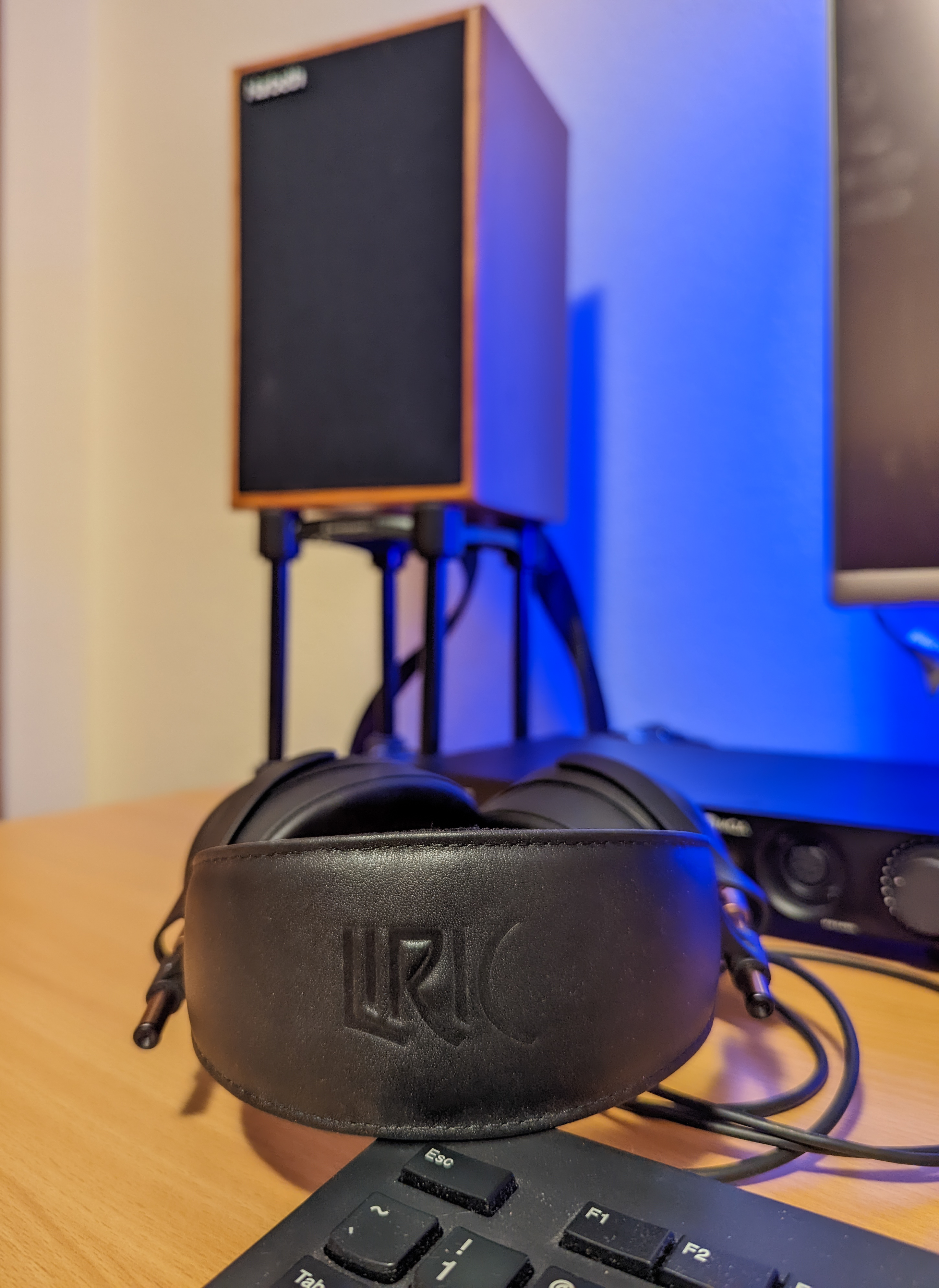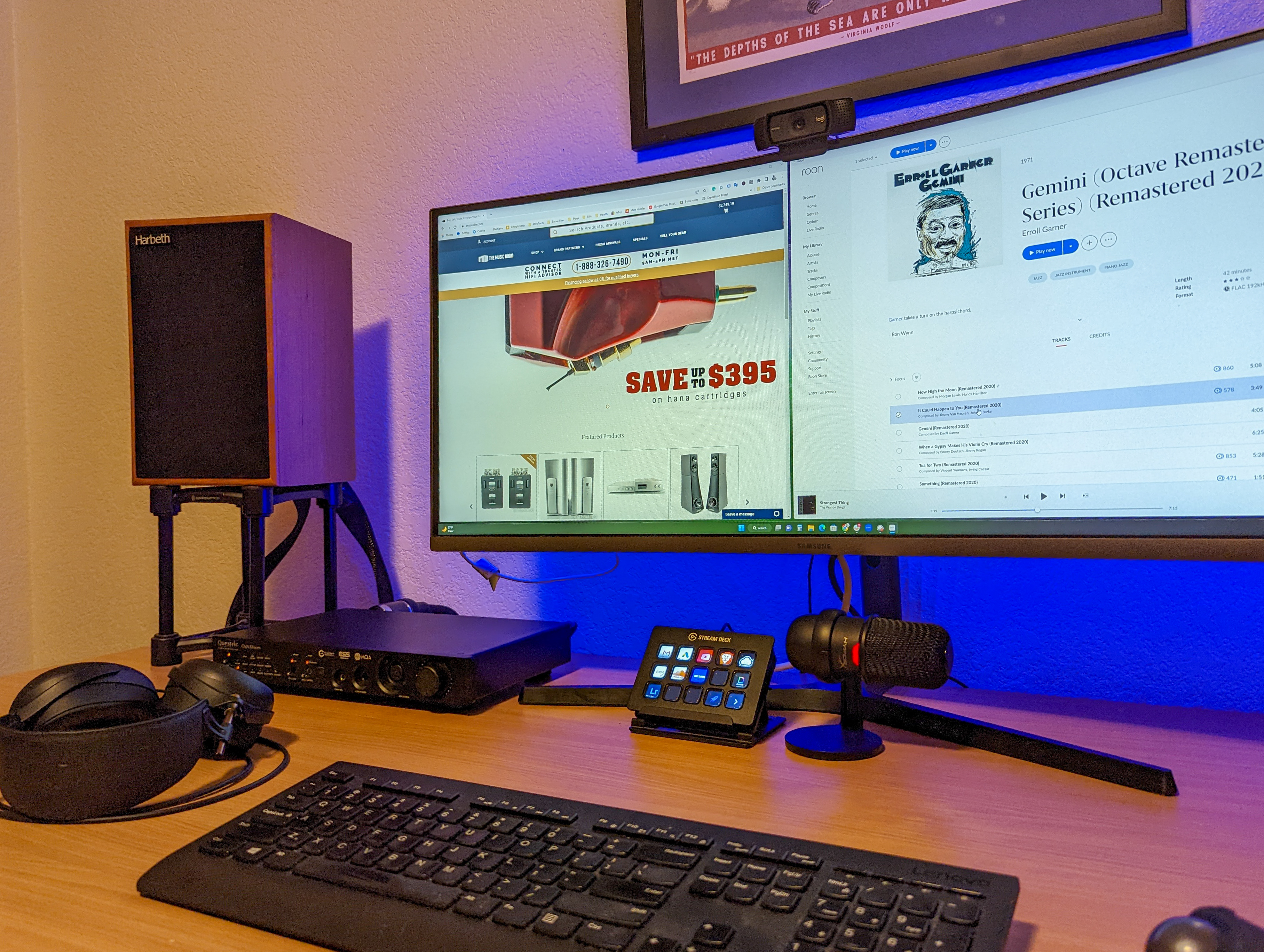Why Nearfield Listening Might Be the Best HiFi Upgrade You Can Make

There is a classic trope in photography that the best camera is the one that is with you. I’ve come to believe that the same is true for HiFi. To understand the application, it is best if I back up and talk about my audiophile journey. Like so many I wanted to build a big, beautiful, ultra-resolving HiFi setup that would deliver those peak listening moments sitting in my favorite chair with a glass of whiskey and a record I love.
Working at The Music Room empowered that journey, demoing components, buying things I loved, and eventually trading them up as my budget allowed. Ultimately in my living room, I had a setup that was exceptional for my budget and room size. Though it had many evolutions, my favorite was using a Clearaudio Concept turntable or Denafrips Ares ii DAC as a source, and a Luxman L-550 AXII integrated powering a pair of Focal Electra 1028BE with a pair of REL subs. In the world of HiFi, there are limitless combinations of amazing gear but for me, this was bliss. Neutral, revealing, and something I could listen to for hours finding new magic moments in the music I love with little or no fatigue.
For all the time, research, listening sessions, and money I had invested in this system, I realized that those peak listening sessions were getting fewer and further in between. Then, the whole world changed with the COVID Pandemic. I was facing long stretches of working from home, connecting to my peers over zoom calls, and all but living at my home office desk. With all this time seeing my main system gathering dust, I was haunted by that saying; the best camera being the one that you have with you.
I made the somewhat rash decision to go all in on a desktop HiFi system by trading in my entire living room setup. I wanted the combination of excellent headphone listening for those times when I am trying not to disturb my family and exceptional nearfield sound so that I didn’t need to rock headphones all day.
The process of building a desktop system has proven to be even more enjoyable than that of building a living room system. For one, each component is, by nature, smaller and generally more affordable. Swapping things out is far simpler than moving heavy amplifiers off of dedicated racks.
Beyond being easier and more affordable, this process has allowed me to better understand each piece of gear in the system and to hear its effects more clearly. In a living room, you are hearing your system and your room. While experimenting with the synergy of components, I found myself always fussing over speaker placement and acoustical treatments. With a nearfield listening setup, the spatial dynamics are more tightly controlled and reveal the nature of the gear more than the components+the room.

You also have the option of headphones, which bring things into even sharper focus for some comparisons. For example, I tested a number of DACs by running them all into the same SPL Phonitor headphone amp and using the same Meze Liric headphones. This allowed me to isolate the nuances of each DAC. In this instance there was zero effect from the room and I could literally place the units next to each other, changing just a pair of RCA cables to play songs back to back between the two. This was the most honest and informative HiFi test I had ever done. Yes, it ultimately helped me to dial in my system, but also to educate my ears on what I was actually hearing with far fewer variables and very short time between hearing the different units.
Nearfield listening also had me relistening to tons of my favorite music with new insights into where the voices and instruments were placed in the recording space. These same stereo cues that had always been present in these recordings were simply getting lost on their way to my ears in a bigger room. I was hearing more detail from music I knew well but the “wow” really came from the improvement in soundstage. I think before I created my nearfield set up, soundstage was a bit of an abstract concept. I got the idea, but now I was actually hearing the placement of the musicians. With War on Drugs’ excellent live record “Live Drugs” I could close my eyes and place the players on the stage. Finally, this is what all these audiophiles have been talking about! I was hooked, fully bitten by the audiophile bug all over again, and the best part is that I was getting to listen and enjoy this setup for hours a day every day.
Another of the biggest lessons in my nearfield journey regards speaker height. While speaker placement is much less of an ordeal than in a larger room, there are immediately noticeable benefits to having the speaker raised like you would see in a studio so that woofer and tweeter are similarly distanced to your ears. If the speakers are lower or close to the desk surface they should be tilted up to drive a similar effect.

For me, my nearfield desktop setup has become my favorite all-time HiFi system because it is one I get to spend the most time with. But, it's not just for the circumstance of listening to it this setup the most but I am also having more fun. Exploring more components, building a system well suited to my sprawling musical tastes. I can hear all that deep blues timbre and instrumental decay on tracks like All Them Witches “Blacksnake Blues”, then switch to the high energy spatial dynamics of something like Daniel Avery’s “Choas Energy”. When the night settles in I can opt for something more intimate and throw on headphones for a precise and delicate presentation of Hania Rani’s“Hawaii Oslo”. This kind of versatility and fidelity would have cost me $20-$30k and a whole lot of hassle in my living room.
Hopefully, most folks won’t have to choose between their main system and creating a nearfield desktop system. But if you have to, my dollars every time would go into my desktop system.
Can you get great, dynamic, emotionally moving sound from a desktop? ABSOLUTELY.
Can you swap components more easily to build a system that suits your tastes? Yes, and it’s easier and generally cheaper!
Will you get to consume more of the music you love? Your mileage may vary depending on the nature of your work. For me my desktop nearfield system is the camera I have with me the majority of the time. I likely consume 10 times the music in true high-fidelity glory now more than I was on my living room system, and isn’t that the point of this whole crazy hobby?
Notes:
At present my system is driven from Roon on my desktop PC connected to a Questyle CMA Fifteen that serves as DAC, headphone amp, and pre, a VTV Purifi 1ET400 amplifier with a vacuum tube buffer driving a and set of Harbeth P3ESR paired with a REL T/7x sub. When I switch to headphone listening I am most often in Meze Lirics although i have enjoyed other over-the-ear headphones from Audeze, Focal, and a few different types of IEMs.
Hear More. Learn More. Love Your System More.
Join thousands of music lovers who get weekly guides, expert insights, and exclusive offers from The Music Room.
